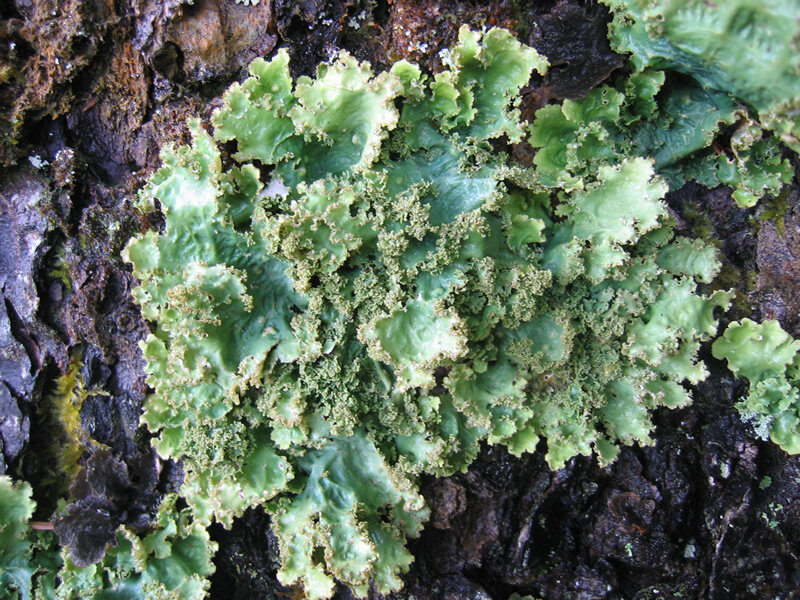From our Education Director, Rachel:
Lichens are a unique part of many ecosystems. You have seen them many times before but you may not have known or understood what they are. Who could blame you?! Lichens are complicated! They are formed by a symbiotic relationship between a fungi and algae and/or cyanobacteria. For the purpose of this post, we will refer to the second partner as algae but there are types of lichen that are formed by fungi and just algae or cyanobacteria and some that are formed with all three elements. A symbiotic relationship is one in which both partners benefit. The fungus is the more prevalent partner in lichen and often tricks us into believing that the lichen we are examining is a fungus. A closer look will help to see the lichen as its own unique species.
To better understand lichens, we can break them down into their parts and consider how the symbiotic relationship helps each partner. First, consider the fungi. Fungi are unique organisms that rely on other organisms for sustenance. They are vital in the decomposition of organic matter as they break it down to provide themselves with nutrients while also “cleaning up” decaying waste. In lichens, fungi provide support and shape while also protecting the lichen from the sun’s harsh rays.
The second partner in lichens, algae or cyanobacteria, is capable of photosynthesis so that they can manufacture their own food. When alga is paired into lichen, it creates food not just for itself but for the fungus partner as well. If cyanobacteria are part of the lichen, they can also create amino acids from atmospheric nitrogen!
Given this partnership, lichens are very successful in even adverse conditions. The protection afforded by the fungus prevents the lichen from drying out—allowing it to continue its job of performing photosynthesis. When the lichen dries out again, it can absorb water from humid air, dew, or other sources. Their efficient handling of water makes lichen viable in difficult and harsh environments. They are even seen in tundra, desert and alpine regions where life is scarce.
Lichens are an integral part of any habitat in which they are found. They aid in soil retention, often help with nitrogen fixation, and they commonly offer food and shelter to animals. In the next few blog posts we will explore the roles that lichen play in various habitats, so be sure to check back in!
Photo by Karen Dillman from the US Forest Service
This is what I imagine when I think of lichen. The shape is certainly fungus-like!
https://www.fs.fed.us/wildflowers/beauty/lichens/biology.shtml

